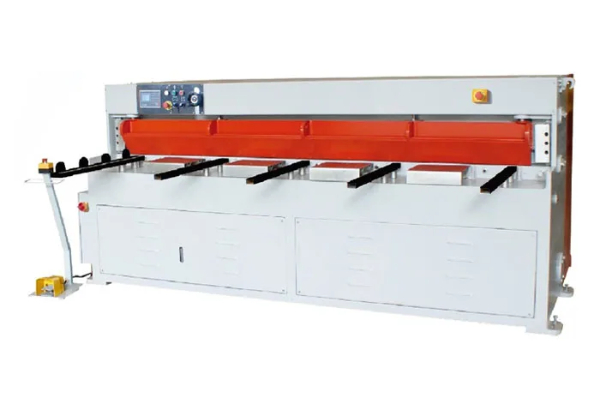
The Evolution of Rectangular Duct Machines Over the Decades
- By:Metmac
- 2024-05-11
- 181
Introduction
Rectangular duct machines have undergone significant advancements over the decades, revolutionizing the manufacturing of rectangular ventilation ducts. This article explores the evolution of these machines, tracing their journey from manual labor to highly automated systems.
Manual Production (1940s-1960s)
In the early stages, rectangular duct machines were largely manual, relying on skilled craftsmen to cut, bend, and assemble sheet metal into ducts. The process was labor-intensive, slow, and prone to human error.
Semi-Automated Bending (1970s-1990s)
The introduction of semi-automated bending machines in the 1970s marked a significant milestone. These machines utilized electrical or pneumatic power to bend sheet metal, significantly reducing production time and improving accuracy.
Computer-Controlled Cutting (1990s-2000s)
The advent of computer-controlled cutting machines in the 1990s brought about another major advancement. These machines used CAD (Computer-Aided Design) software to automatically cut sheet metal parts, resulting in increased precision, reduced scrap, and faster production rates.
Automated Assembly (2000s-Present)
In the early 2000s, automated assembly systems emerged, revolutionizing duct manufacturing. These systems integrated cutting, bending, and assembly into a single automated line, significantly increasing efficiency and productivity.
Advanced Materials and Techniques
In recent years, the development of new materials and manufacturing techniques has further advanced rectangular duct machines. Advanced alloys, such as aluminum and steel, have improved the strength and durability of ducts. Laser cutting and welding technologies have also increased precision and reduced production costs.
The Future of Duct Machines
The future of rectangular duct machines holds endless possibilities. Ongoing advancements in artificial intelligence (AI) and robotics promise to further automate the production process, leading to even greater efficiency and customization. Remote monitoring and diagnostics will also enable predictive maintenance and reduce downtime.
Conclusion
The evolution of rectangular duct machines over the decades has been a remarkable journey of innovation and technological advancement. From the manual days of the 1940s to the highly automated systems of today, these machines have revolutionized duct manufacturing, enabling greater productivity, accuracy, and cost-effectiveness. As technology continues to evolve, we can expect even more remarkable advancements in the future, shaping the landscape of ventilation duct production.
-
Advanced Sheet Metal Rolling, Cutting, and Folding Machines for Efficient Fabrication
2025/10/22 -
High-Precision Sheet Metal Bending and Cutting Solutions for Modern Manufacturing
2025/10/22 -
High-Precision Solutions from Leading Sheet Metal Cutting Machine Manufacturers
2025/09/11 -
Reliable Sheet Metal Equipment for Sale to Support Precision Fabrication
2025/07/17
-
Advanced Sheet Metal Rolling, Laser Cutting, and Folding Machines for Precision Fabrication
2025/10/31 -
High-Performance Sheet Metal Bending and Cutting Machines for Modern Fabrication
2025/10/31 -
High-Quality Sheet Metal Equipment for Sale: Efficient Solutions for Modern Manufacturing
2025/10/31 -
High-Performance Sheet Metal Equipment for Sale: Forming and Shearing Solutions for Modern Fabrication
2025/10/22
-
A Guide to the Latest Innovations in Sheet Metal Folding Machines
2024/11/29 -
Key Features to Consider When Investing in a Sheet Metal Folding Machine
2024/11/28 -
Enhancing Precision with Advanced Sheet Metal Folding Machines
2024/11/27 -
How to Choose the Right Sheet Metal Folding Machine for Your Workshop
2024/11/26






